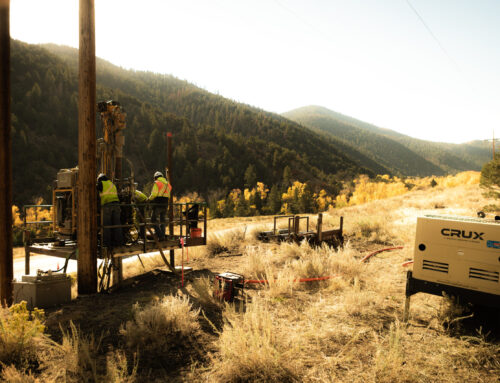
High Altitude Foundation Design-Build
The Rhinedollar project involved upgrading a 1.6-mile distribution line located within the Inyo National Forest. 13 aged lattice tower structures were replaced with tubular steel poles to support the upgraded 12 kV circuit. Due to rugged terrain and limited access, helicopters were employed to remove existing structures, transport personnel and equipment, and deliver all foundation materials and replacement structures.
Team Members
Southern California Edison
Crux Subsurface
DCI Engineers
Crux’s Role
Crux served as the general foundation contractor, providing 100% design-build micropile foundation services for all 13 replacement poles. Elevations along the alignment ranged from approximately 7,800 feet to 9,670 feet, which created challenging helicopter conditions and limited construction to a very small window in the summer months. Higher than average temperatures added to the challenging conditions, and required innovative scheduling techniques and load adjustments.
Site excavation on Rhinedollar was minimized through the use of Crux’s platform drilling technique. Customized drills were set on platforms, and arrays of between three and six 7-inch micropiles were installed depending on geotechnical conditions and structure loads. After grouting, proof testing was completed to the maximum factored load to ensure that design criteria were met. Crux provided a steel pile cap design for this project to reduce helicopter flight hours associated with transporting the concrete to construct cast-in-place concrete caps. Steel caps were set in place by helicopter and bolted to the micropile array to act as a transition plate between the piles and steel poles.
Additional project challenges included close proximity to public campgrounds and Highway 120, which provides the East entrance to Yosemite National Park. Yosemite is the third most visited National Park in the country and sees large amounts of traffic during the summer months when the rebuild took place. In order to ensure public safety throughout the construction process, flight corridors for external load transport were chosen specifically to avoid campground areas and highway 120. In the few areas where crossing the highway was unavoidable, traffic control was employed to ensure vacant roadways. These safety measures were implemented successfully, and the project was completed without incident.







